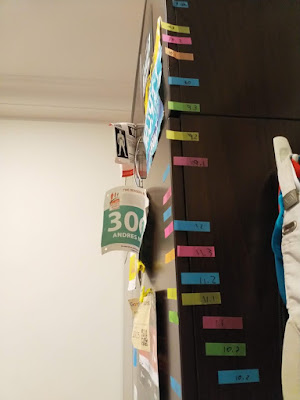Timeline of changes in your body - 15 months after surgery
So 15 months have passed by... And feels great! Using the arm gets easier as time goes by. Visually, doesn't seem to make a huge difference compared to 12 months mark. But I can feel quite a difference since. A few weeks ago I started doing small planks, and I think I might be able to do one push up at some point. I started using my right arm to soap my hair and to brush my teeth, generally I try to make it the leading arm again. Some movements are easier than others, and most of them are not fluid yet. To me, some of the key recovery points are achieving the movements needed to perform my hobbies. I'm a big fan of eating, so there goes one. Running, swimming and cycling are there too (although might not get on a road bike for some time, MTB or city bikes are good for now). The ultimate challenge will be riding my motorbike regularly again - or at least, have the choice to do it if I feel like it. Combined movements (flexion / abduction) are still a challenge and not v...
